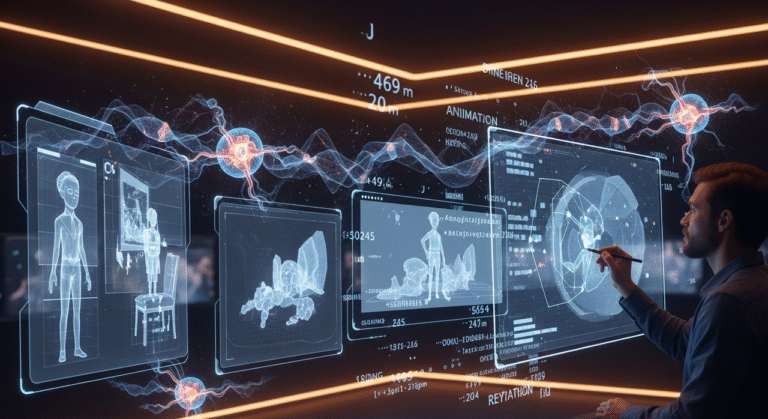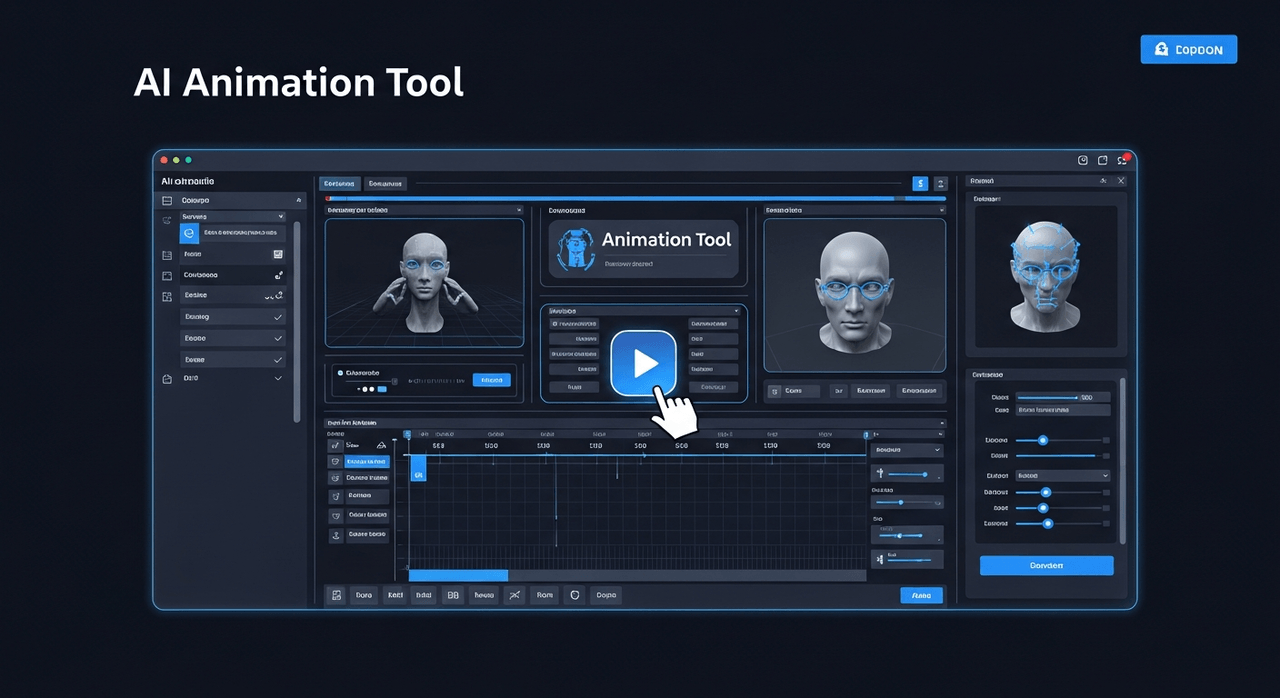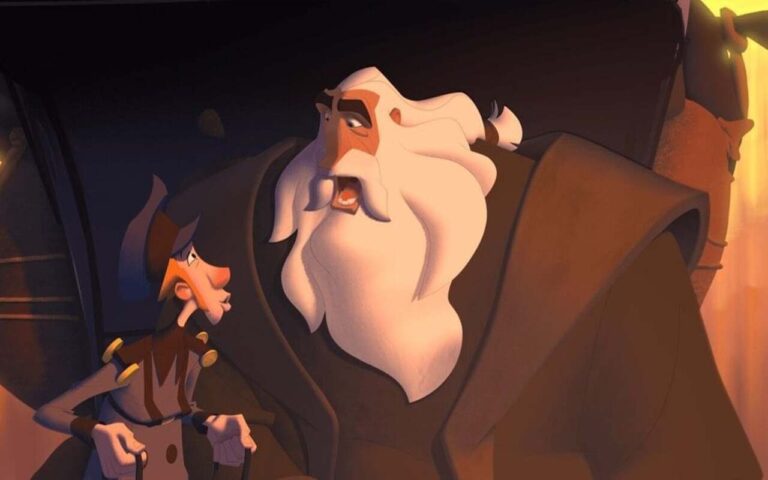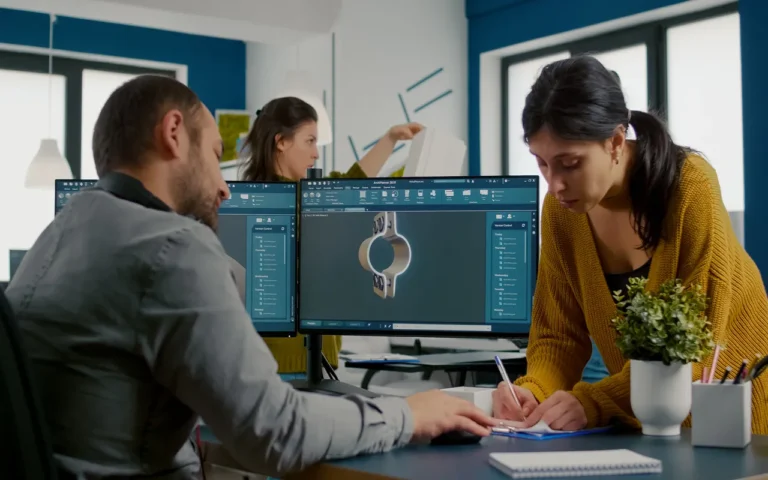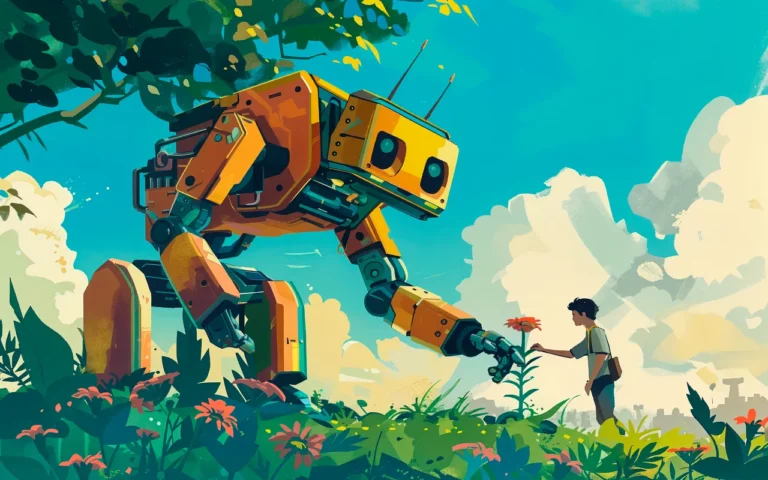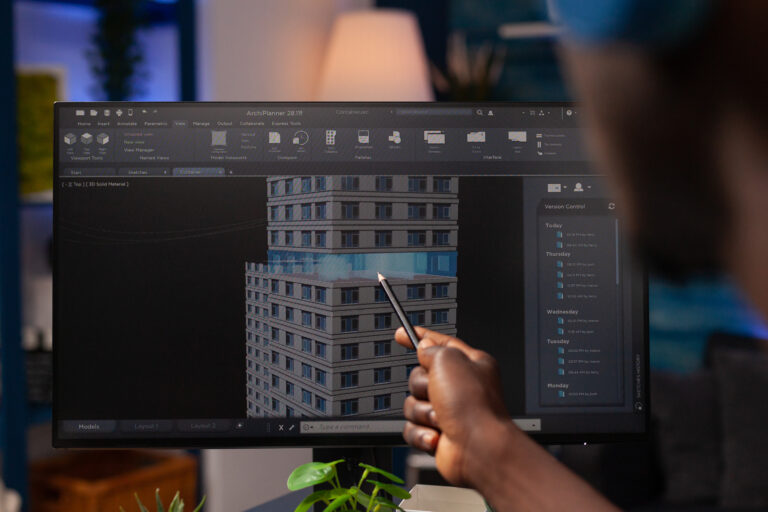Have you ever wondered what goes into creating a beautiful 3D sculpture? 3D sculpting is a digital art technique that allows artists to create three-dimensional models by manipulating virtual clay, mimicking traditional sculpting methods. 3D digital sculpting is quickly becoming a popular art form for both professionals and hobbyists.
In this blog, we’ll explore the world of 3D digital sculpting – a growing art trend, transforming sculpture as we know it. Read on to learn more about the tools and techniques used in this incredible form of digital art!
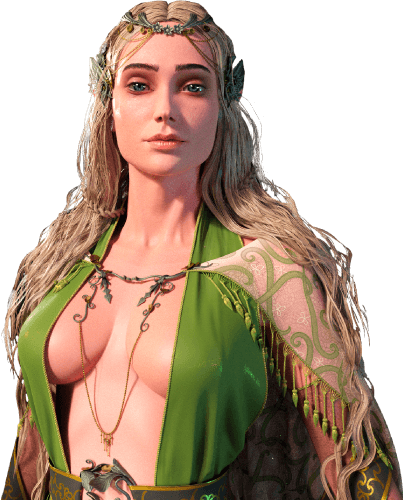
Need 3D Animation Services?
Visit our 3D Animation Service page to see how we can help bring your ideas to life!
What Is 3D Sculpting?
An item can be treated as if it were a real-life model made of clay using tools provided by 3D sculpting software, which offers additional capabilities beyond the standard 3D modeling features. 3D sculpting software enables you to add details to models that would otherwise be challenging or impossible to make using conventional 3D modeling techniques, as a result, it is no wonder that graphic artists, gamers, and producers of CG (Computer Graphics) are so fond of it.
With the aid of a top-notch sculpting tool, you may also produce results that are photorealistic and hyperrealistic and are used in the film and animation industries. Depending on the complexity levels and the artist’s technical abilities, a successful computer-sculpting project can be finished in a matter of minutes or may require a significant amount of time.
Examples of 3D sculpting services and game design include the characters and creatures in the film “Avatar,” the video game “Uncharted 4: A Thief’s End,” and the mobile game “Clash of Clans.” All of these projects utilized 3D sculpting and animation techniques to create highly detailed and realistic models that were used in the final product. You can also create a masterpiece by getting professional in 3d art styles beside all other skills.

Key Stages of the Sculpting Workflow
Multiple layers are carved throughout the digital sculpting process, mirroring traditional techniques. This structured approach ensures a smooth and efficient creation of complex models, allowing artists to build from broad strokes to intricate details. Understanding and adhering to these stages is crucial for managing complexity and achieving a high-quality final product. Each stage builds upon the last, ensuring that foundational elements are solid before moving on to finer details, which prevents costly rework and maintains artistic control throughout the project. After 3D object’s geometry is created, the model should go to the next steps, such as color, texture, and other elements (including 3D rigging, animation, and VFX) are added.
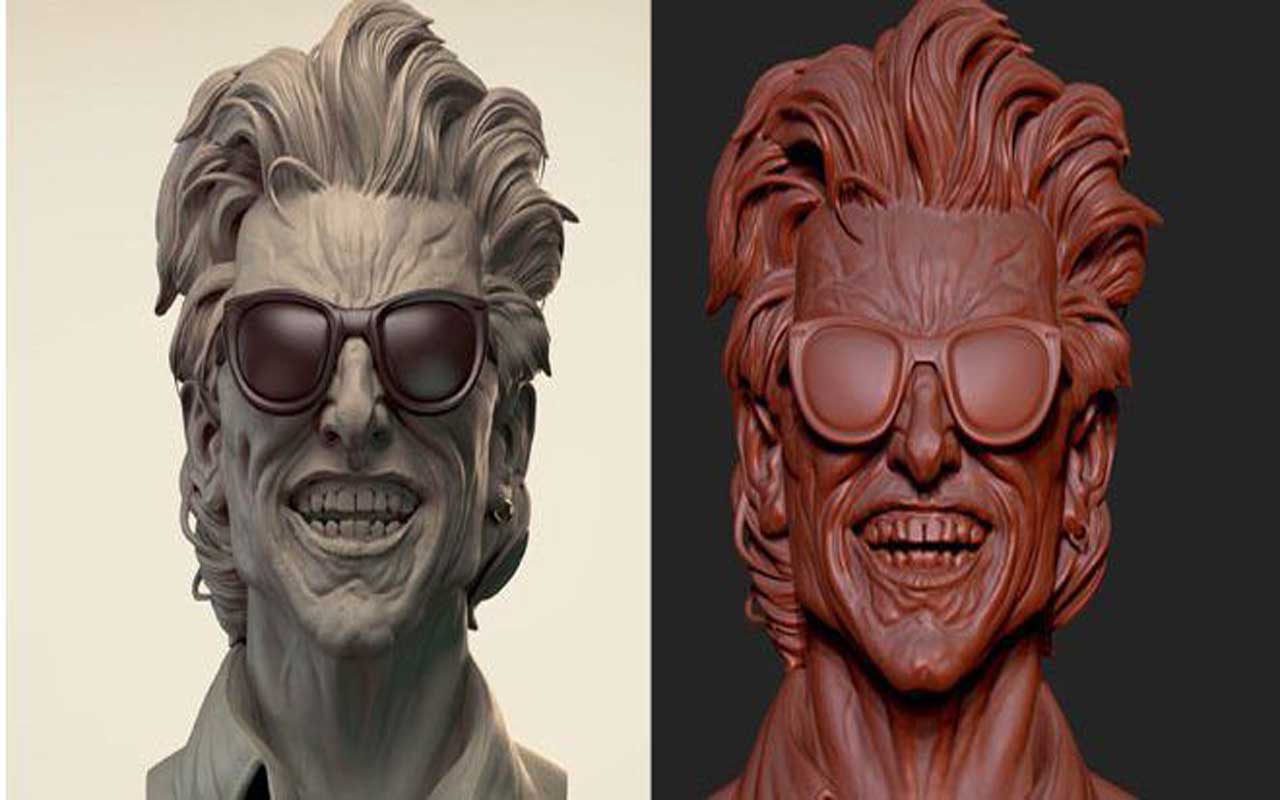
Concept & Reference Gathering
Before you even start making things, you’ve really got to get your ideas and references first, you know? Like pictures, sketches, or just some real-world stuff. That’s what helps you figure out the design, how big things should be, and the whole feel of it. For characters, you’d study anatomy; for other things, you’d collect blueprints. A strong idea and good references give you a solid base, guiding your work and keeping you from having to redo stuff later. Artists often use mood boards or look at images inside the program to stay focused. This is where you really set the artistic direction, so all the next steps are easier and more to the point. Without a clear plan and good references, it’s easy to get lost or make models that don’t look real or consistent.
Looking for a studio or someone to make 3D animation movies for you? The solution Is all yours, and it is Poland animation studio.

Blocking (Low-Resolution Base Forms)
The process begins by establishing the model’s fundamental shapes and proportions. Using a simple primitive, push, pull, smooth, or pinch the virtual clay to define primary forms. This “blocking” stage focuses on the overall silhouette and major features. Use large brushes at this low-resolution stage to ensure accurate foundational structure, as early inaccuracies are magnified later. You really have to get the “big picture” right in this step, before you worry about all the tiny details. If you rush this, your sculpture might just feel “off.” Like the proportions are all wrong. Then you’re stuck going all the way back and trying to fix it, which can totally mess up the whole thing.
Refinement & Subdivision
Once the artist is pleased with the basic shape, add geometric subdivisions and refine forms. As you subdivide, polygon count increases, allowing finer control and smoother surfaces. This iterative process refines shapes, adding secondary forms like muscle groups. It requires significant computer resources, emphasizing a layered approach of gradually increasing detail. Artists go from making big, general shapes to more defined ones, carving out the main parts that give the sculpture its own look. It’s a tricky balance of making things more complex while still keeping the main shapes strong. This back-and-forth process of making things better lets you build up details slowly, making sure all the smaller shapes fit perfectly with the main ones you started with.
High-Detail Phase (Micro-detail, Pores, Textures)
So, the last thing? That’s all about adding the tiny details. Scars, wrinkles, pores—stuff like that, you know? Just to make it look real. Artists use special brushes for it, or sometimes they just throw in little imperfections on purpose. The whole point is to have a believable, visually rich model. After all the shapes are done, you add color and texture. This part uses special brushes and a kind of random noise to really take a good sculpt and make it amazing by catching all the small little things. For example, adding faint freckles or tiny scratches on a hard surface makes it feel less like a perfect computer thing and more like something that actually exists in the real world.
Best Practices & Common Mistakes
If you want to get good results and stay out of trouble, just follow some of the best ways of doing things. It’s habits like that which make your work faster, better, and honestly, just smarter. When you make them part of how you create, you save a ton of time, don’t get so frustrated, and always put out great work. It’s not just about knowing the technical stuff; it’s also about having a disciplined way of solving problems.
Using References & Building Visual Landmarks
Okay, so you always wanna use strong references. Things like anatomy charts or concept art. Keep them right there in your program so you can constantly check them. It’s smart to set up “visual landmarks” from the beginning, too—they’re just key points that keep everything consistent and correct. This stops you from going off track and makes sure the final product holds together. Oh, and also, flipping your model and checking it against a mirrored version helps you catch mistakes and keep things balanced. That’s a good trick to use whether you’re sculpting a person or a car, I mean, it’s just important. Like if you’re doing a head, for example, you’d set up pictures for the front, side, and that kind of in-between angle. Then you’d use certain spots, like the corners of the eyes or the chin, to make sure all the sizes are right as you add more details.
Mesh Topology & Retopology Essentials
Okay, so sculpting, that’s just for the shape, right? But the way the polygons are all arranged—that’s called topology—is super important for everything else you do. So, if you have a clean, organized mesh, it just makes everything easier. Your animations will be smooth, you can unwrap it without a headache, and it’ll run well in the game. Now, for those super detailed, high-res sculpts, you usually need to do “retopology.” That’s basically just making a brand new, clean mesh with way less polygons that still keeps all the awesome shapes you made. This new mesh is used for rigging, animation, and in game engines where the number of polygons and how well the data works are really important. Learning retopology is what connects being a free artist to the tech stuff you need to do. Without proper retopology, even a beautiful model might be useless for animation or real-time rendering, and that just causes major holdups. For example, if a character’s face has bad topology, the polygons might stretch weird when they smile, which ruins the illusion. Retopology makes sure the mesh flows right along the natural curves and movement lines, letting you have realistic movements and expressions.
Avoiding Overworking Details Too Soon
Don’t add tiny details too soon, because that makes a messy sculpt that’s hard to fix. You should work from big to small, starting with the main shapes. This way, you get a solid base and can make changes easily, which saves a ton of time and makes your sculpt better. A lot of people just say it’s “big shapes first, then medium, then small,” kind of like a painter starting with big colors before small brushstrokes.
Layer Management & Versioning
Use layers to add details and just try things out. They let you turn stuff on and off without messing up the main part. You should also save your work a lot and keep track of versions, like “character_v01.” This gives you a good safety net that lets you go back, protecting your work and your creative freedom.
What is Digital Sculpting Used For?
Nowadays, the majority of television shows and films employ captivating visual effects that are chock-full of 3D sculptures that are either static or animated. Digital sculpting is required in many creative projects. During the conception phase, concept designs are revised into 3D sculptured shapes. This helps the director envision how the character will act and creates the character’s ultimate look. You get to know the concept art process for video games first.
One of the most important aspects of 3D sculpting for animation is creating believable and expressive characters. This requires a high degree of attention to detail, particularly when it comes to the face and hands, which are key areas for conveying emotion. Artists will often spend a significant amount of time sculpting and detailing these areas to ensure that the final character model is as expressive as possible.
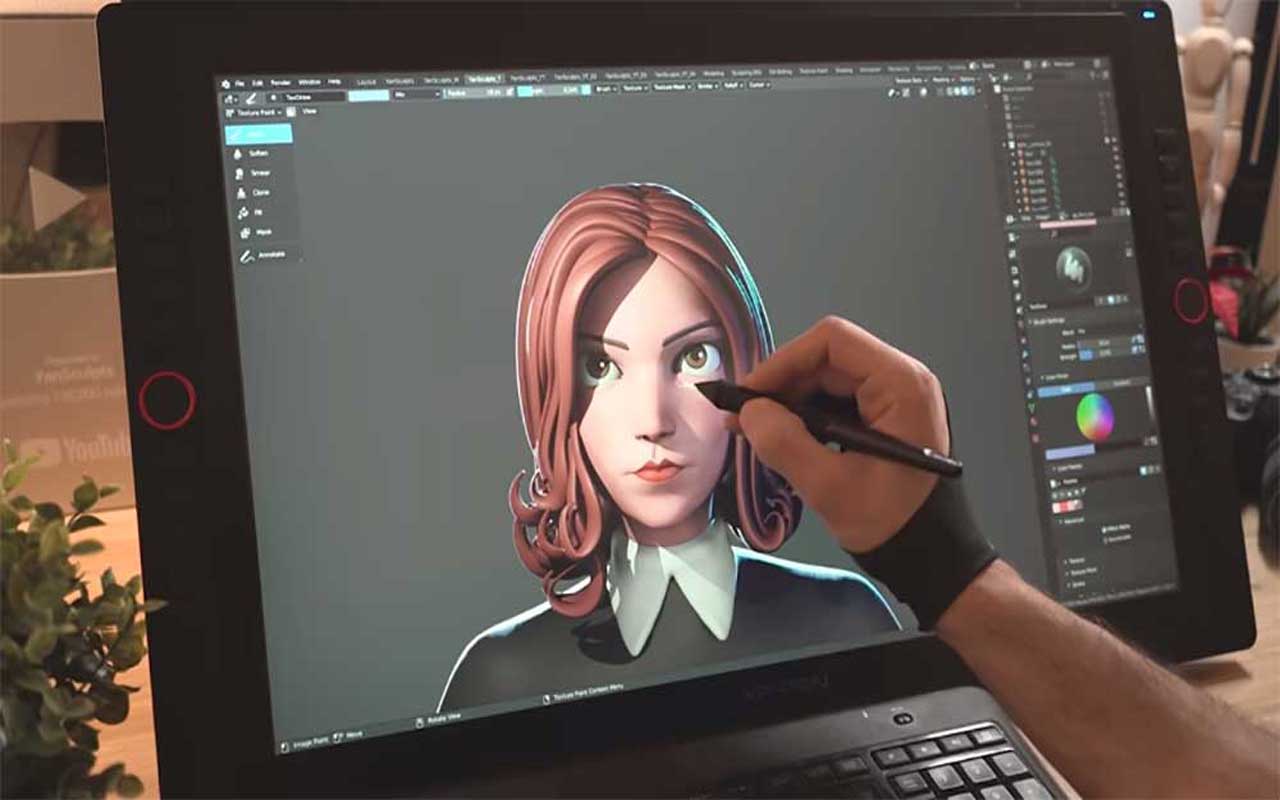
In addition to characters, 3D sculpting is also used to create detailed models of environments, such as landscapes and buildings. These models can be used as backgrounds for animation, or as the setting for a game. It is also applied in the toy industry and 3D printing. In brief, digital sculpting is used as the following:
- In motion pictures and television shows that extensively rely on visual effects or 3D animation.
- A digital sculptor is also required at certain points in the creative process.
- During the conception stage, a sculptor turns concept sketches into 3D sculptures. The filmmaker can utilize this to gain a sense of the character before deciding on a look and feel and making modifications.
- Once the design is chosen, a model will be given to a digital sculptor for refinement.
- The creation of realistic 3D worlds and characters requires this approach. For a realistic result, the sculpt texture will be applied to the finished and rendered model.
- This technique helps make digital animals look more lifelike.
- Sculpting is used in high-end game design as well.
- The majority of game objects must be optimized to have as few polygons as feasible in order to compress the size of the game and decrease its overall size.
- Using a texture map from a digital sculpt allows for the highest level of detail to be captured with the fewest number of polygons.
- It is even used in the jewelry industry. ZBrush allows you to create natural shapes with perfect curves, yet also include all the subtle variations which can give your model a sense of being handmade.
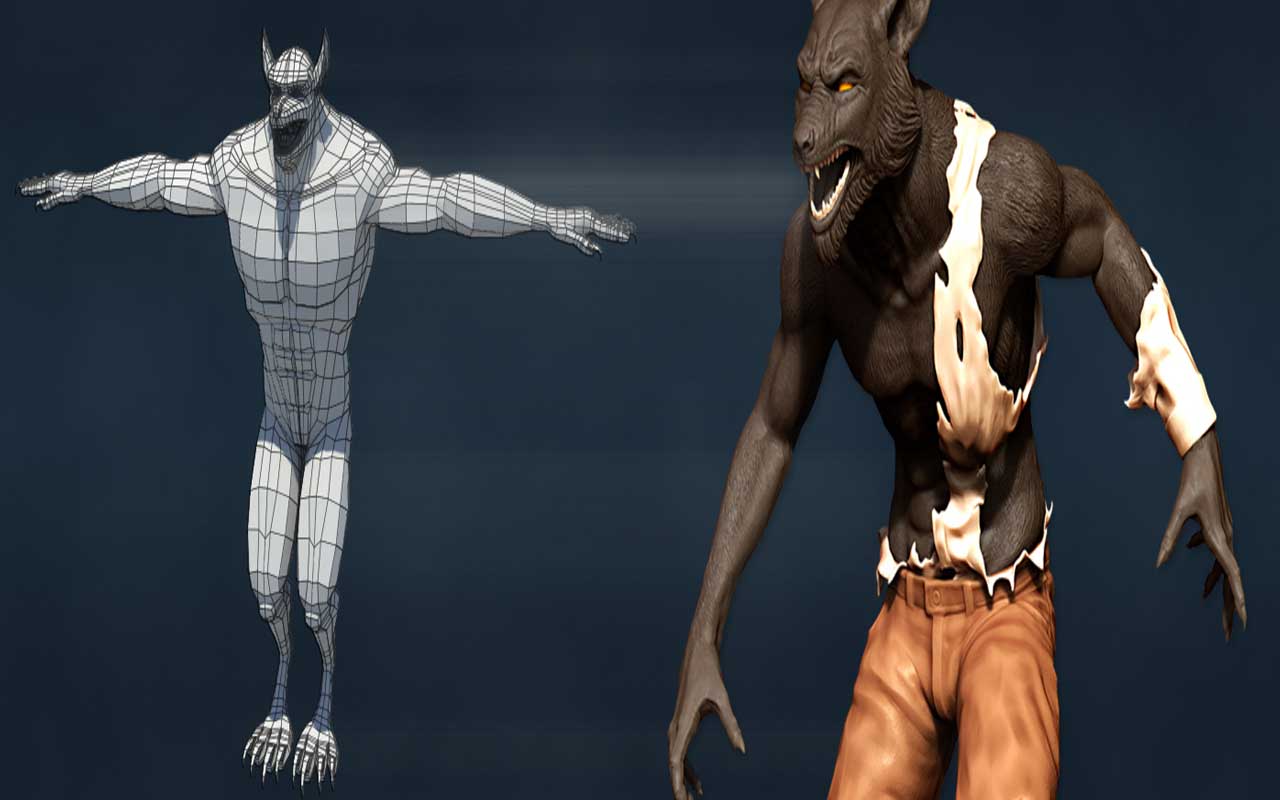
Read More: Top 13 Drawing and Sculpting Games
Digital Sculpting Software Tools
The Best 3d Digital Sculpting Software Tools
For a digital sculpting project, you can pick between two categories of software. Either mesh-based geometry or voxel-based geometry can be used. So what actually makes a difference? Let’s dive in!
Voxel-based Geometry | Mesh-based Geometry | 3D-Cost | Blender |
|---|---|
ZBrush | ZBrush |
MagicaVoxel | Cinema 4D |
– | Mudbox |
Voxel-based Geometry 3D Sculpting Software
A distinct method is provided by voxel-based geometry, in which the volume is truly a fundamental component with addable and removable materials. Simple enough: using this technique to create your digital sculpture gives you complete artistic flexibility. Low-detail work is dangerous because it carries the risk of obliterating finer details. Today, there is an abundance of digital sculpting software on the market. You must, however, be certain that the one you choose is the perfect fit for your project. Through complex computations, several of these systems produced polygon meshes that could be manipulated like clay. SelfCad can be used to this end.
3D-coat is also one of the software programs used for this purpose. 3D-Coat is an extremely well featured package. It can do both volumetric and surface based 3D sculpting, re-topology, UV unwrapping, per-pixel texture painting, etc.
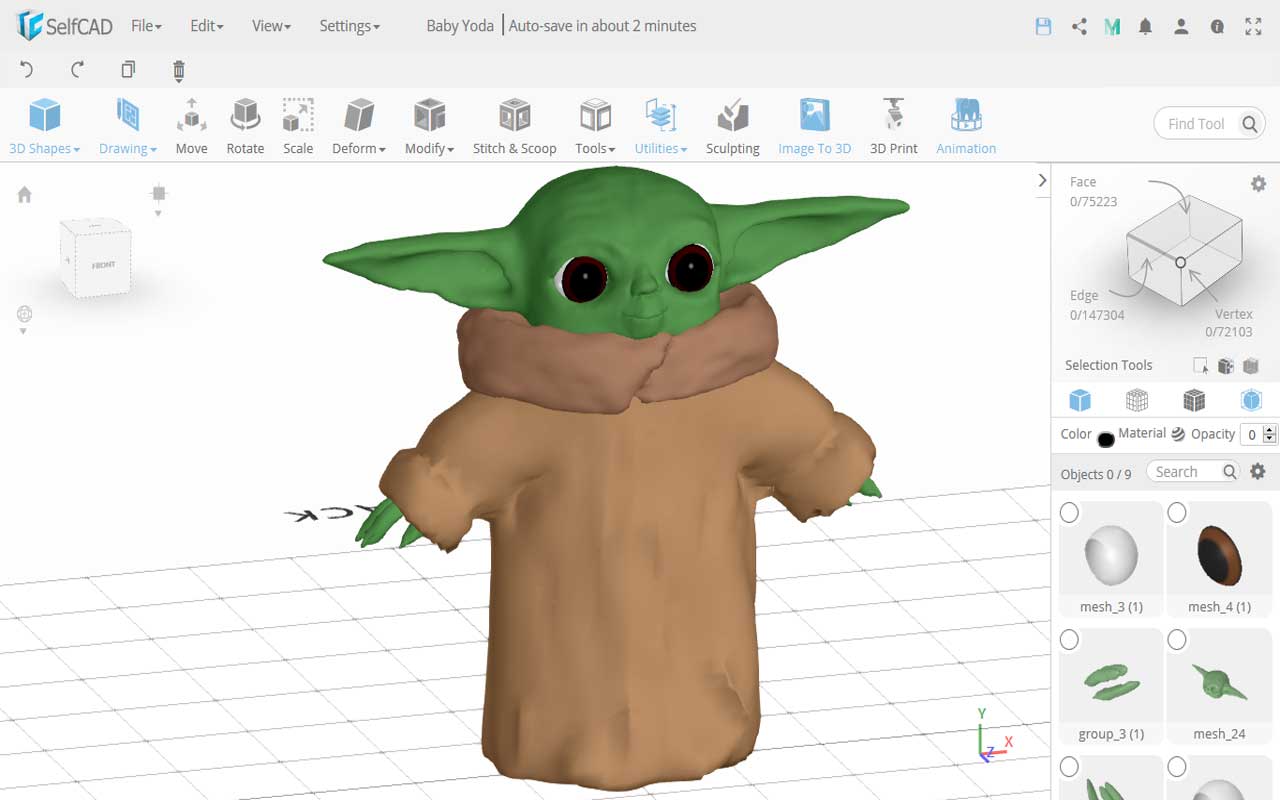
Mesh-based Geometry 3d sculpting software
A mesh-based geometry is made of a surface mesh of joined polygons that can be pulled or pushed together. The ability to alter the mesh at different levels of detail is one of its advantages. For instance, smaller polygons may be used in portions needing fine detail while larger polygons may be used in other parts. There are many 3D sculpting programs on the market, including SelfCAD, ZBrush, Blender, Cinema 4D, Mudbox, etc. Which one should you pick, though? Which of the following 3D sculpting programs—ZBrush, Blender, Cinema 4D, or Mudbox—should you choose? Keep in mind that 3D sculpting might not be for everyone and that producing truly superb, photorealistic models might require some work.
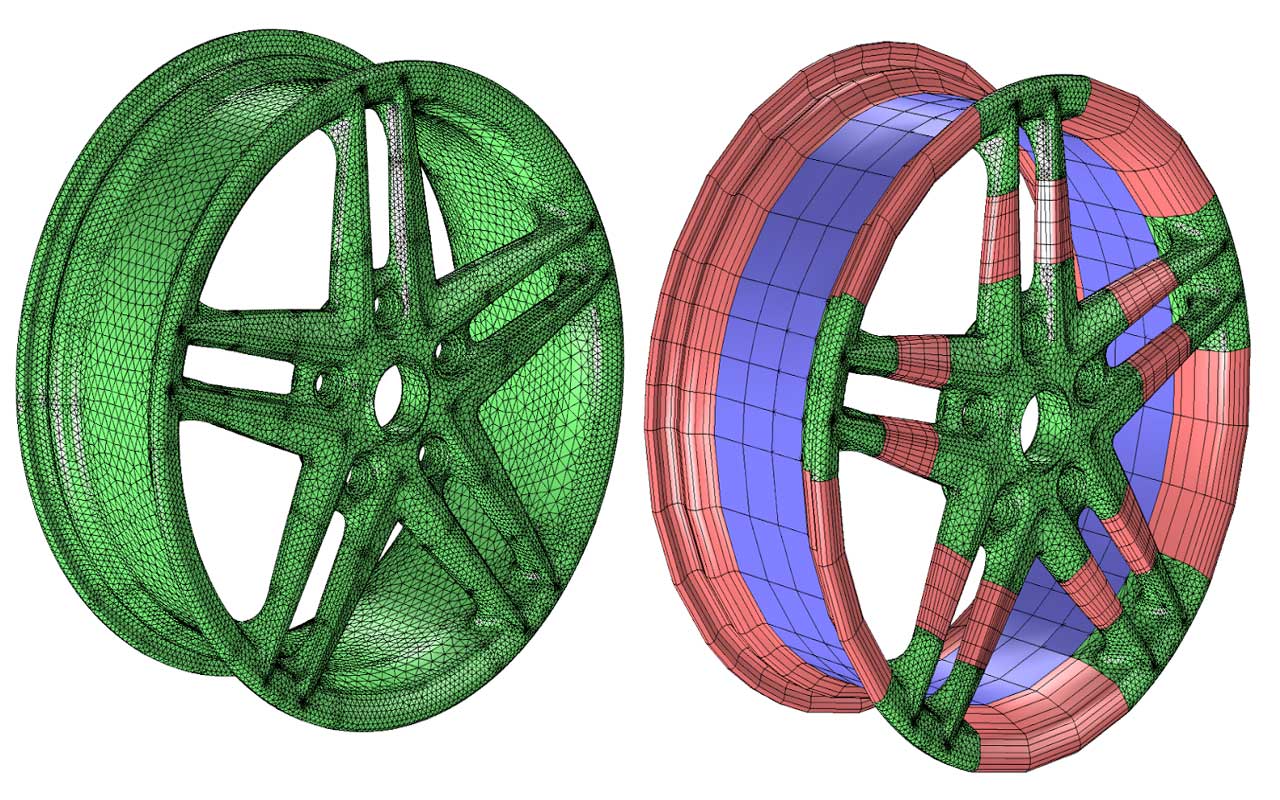
Popular 3D Sculpting Programs
ZBrush is the most popular and often used sculpting program. It is a front-runner in the 3D industry due to its user-friendly tool and simple connection with 3D software.
A close rival, Mudbox is more well-liked among beginners. Although ZBrush has a more gradual learning curve, it does not offer the same brushes and toolset. Additionally, Mudbox works well with 3DsMax and Maya from Autodesk. The firm that developed ZBrush also produced Sculptris, a free sculpting application. Even a newbie with no prior 3D knowledge can easily use it because it is so intuitive.
Blender is another possible application for 3D sculpting. Blender significantly streamlines the process of moving from idea research to final model production by providing the sculpting and polygonal modeling toolkits side by side. You can uncover the fun of using Blender’s built-in sculpting features to create organic subjects.
Since the toolset is fairly basic, you should consider upgrading to a more complex application after you reach a particular level. However, there are several options available. For 3D artists to express their creativity more fully in their work, 3D sculpting is the ideal medium.
Similar to a traditional sculptor, a talented digital sculptor may manipulate digital geometry, which is essentially synthetic clay that imitates organic shapes. You can do that using any reliable sculpting application. Additionally, these methods make it possible to achieve degrees of detail that are unattainable with 3D modeling alone.
There are also applications available on mobile phones which can help you out in this process easily. Nomad Sculpt is one of them. It is a 3D modeling, texturing, and rendering app for iOS and Android. In Nomad, you can build models with up to millions of polygons, just like modeling clay. It has real-time rendering capabilities and makes use of PBR-based texturing. There are also 11 best 3D modeling software programs to lead you through this.

Pros and Cons of Using Digital Sculpting
3D sculpting can either succeed or fail depending on how you use it. You can spend days working on it with little progress, or you might obtain the model of your dreams in a matter of hours. You should be aware of the benefits and drawbacks of this strategy to make the most of your time:
Pros of Using Digital Sculpting:
- Ideal for making organic objects
- wide latitude for modifying
- The object adding delicate features is simple
- Corrections can be made instantly
- Frequently quicker than modeling
Cons of Using Digital Sculpting:
- Unsuitable for even geometry and forms
- Needs a unique set of abilities
- Learning to curve might be challenging.
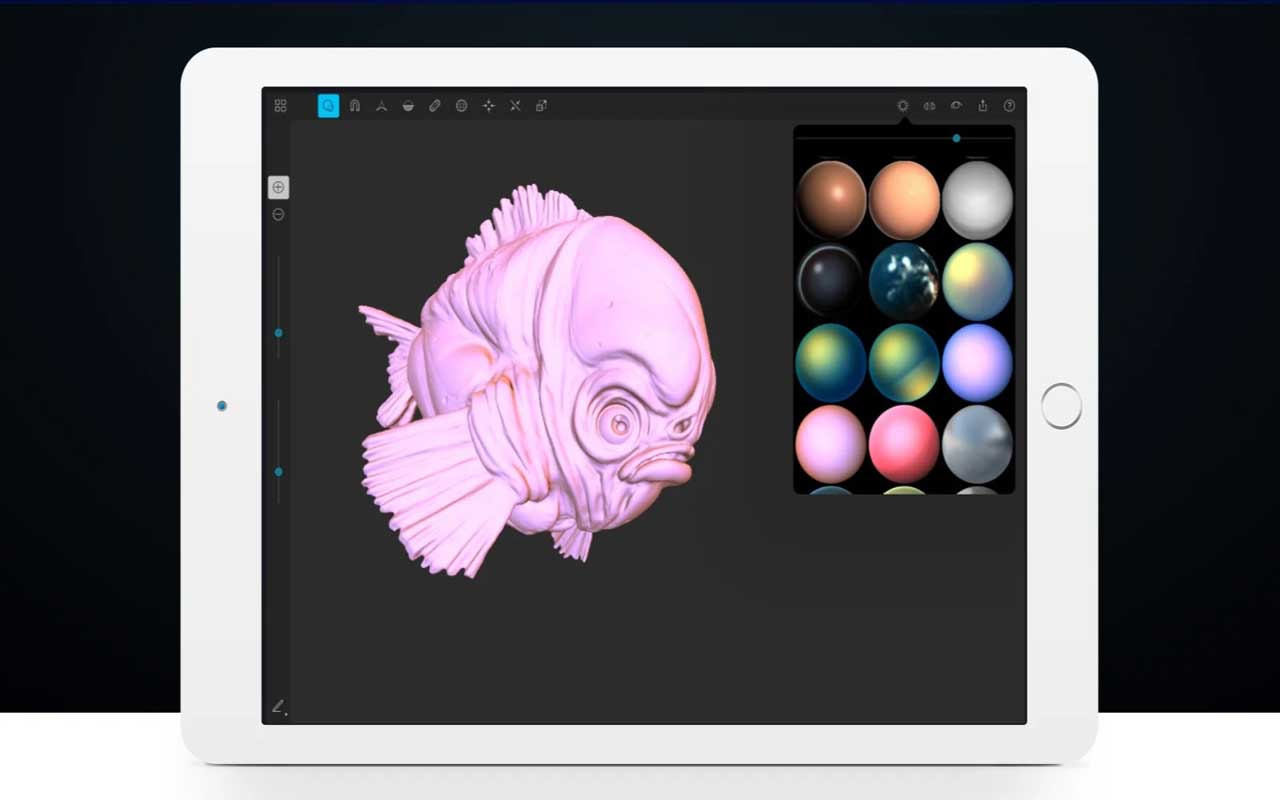
Sculpture Beyond the Screen
3D sculpting is changing a lot. It’s moving past just computers and using new tech, like VR or tablets, to be more immersive. This is opening up new doors for artists and making the whole thing a lot more flexible and open to everyone.
VR Sculpting – Immersive Modeling in Virtual Reality
Okay, so VR sculpting. It’s basically modeling 3D stuff in virtual reality. You use the controllers instead of a mouse and keyboard, so you can move your cursor in all directions. It feels super cool and immersive, and it literally lets artists reach into their sculpts with their hands. It also helps you design faster, I mean, because it’s so easy to understand the space and use the tools.
When you do VR sculpting, you can still have a ton of control over how the polygons are laid out, with features like decimate and subdivide, and even a dynamic topology mode. Tools like Adobe Substance 3D Modeler or Medium by Adobe are good examples. They give you a hands-on feel that’s a lot like real sculpting and just makes the whole process feel more natural. This tech is great for getting ideas out and quickly blocking out shapes, since it uses your natural hand movements in a way a regular computer can’t.
Using Tablets and iPad Apps like Nomad Sculpt
With powerful mobile devices, 3D sculpting is now for artists on the go. Apps like Nomad Sculpt let you build models just like clay, but with tons of polygons. This makes it really portable and hands-on. It’s making 3D sculpting open to a lot more people, from pros to hobbyists, because you can capture ideas whenever and wherever they hit.
Pipeline Integration: From Sculpt to Rigging, Animation & VFX
A detailed digital sculpt is just the start of a bigger 3D process. Once it’s done, you have to get it ready for things like animation and VFX, which usually means doing retopology to create a clean mesh. The sculpt is the master source of details, which you “bake” onto the low-res mesh for amazing visuals. This whole process is super important for making sure the sculpt’s details work in a moving scene.
How Is 3D Sculpting Different From Poly Modeling?
3D sculpting and poly modeling have different use cases, and both of them are good. They each are separate things. It’s not like sculpting isn’t superior for making cars and like poly modeling isn’t necessarily superior for making characters, it’s all about finding the right tool for your work.
The main difference between poly modeling and sculpting is that when you are sculpting, you are separating out the design phase and the topology phase, so first you’re making sure that your design is fine. To be more clear, you make sure the shapes are all exactly the way they should be, and then you go in and refine the topology later on and that’s the difference between poly modeling and sculpting. Poly modeling is something you’re doing concurrently, right?
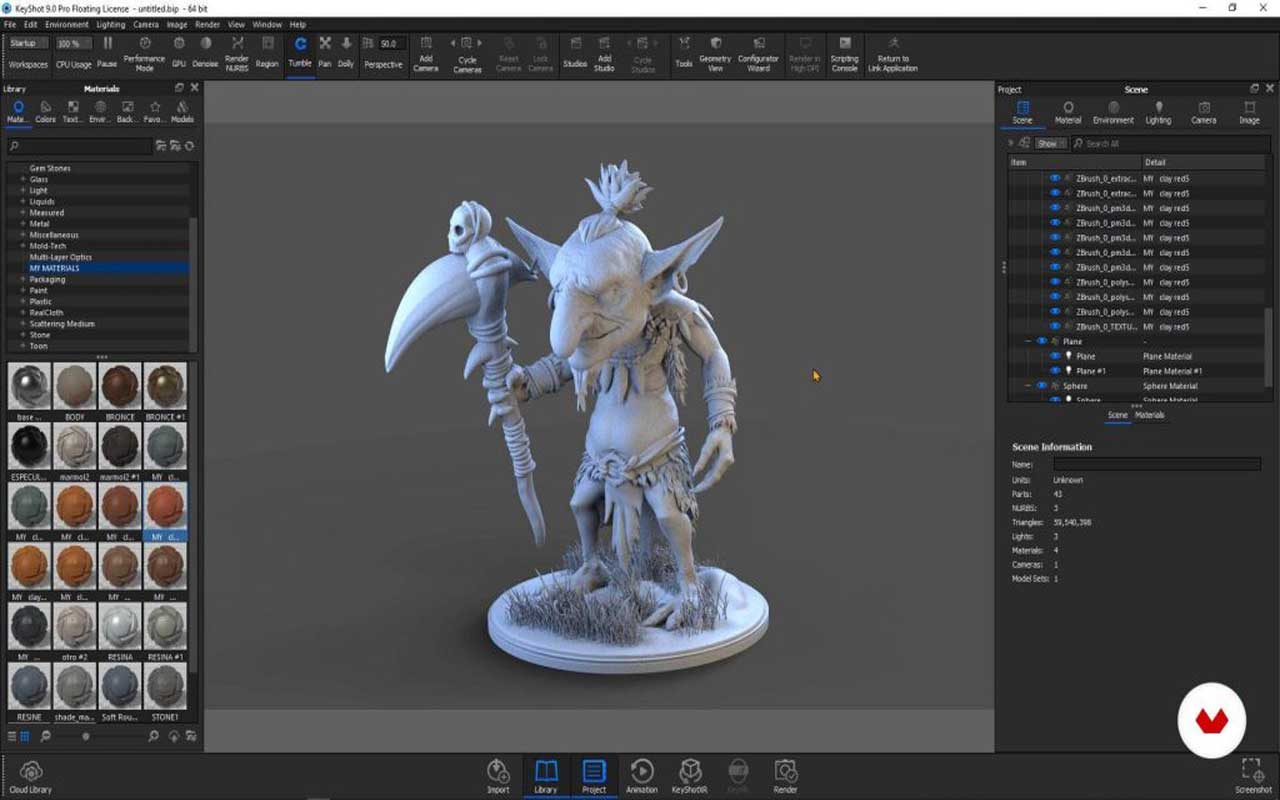
Accordingly, as you block in the design, you will also block in the face and all the major loops. This is fantastic for some projects, like when creating a car model with precise blueprints. You should poly model the model first so that you may block it in with polygons and then fine-tune the design. Making anything from references is a fantastic idea, especially when making props.
The primary difference between poly modeling and sculpting is that the former focuses on direct lines of vertices, edges, and polygon mesh, while the latter focuses on indirect lines of vertices, sub-object level, and shaping of a huge mesh, such as a sculptor.
The fundamental building block of all 3D applications is 3D modeling. With it, you may use polygons, mostly triangles and squads, to design and alter any digital object. The polygons are often multi-sided with flat surfaces, arranged in a 3D mesh to generate a 3D image. You can create 3D models using vector points, lines, and shapes since organic shaping is impossible. It is thought to be the ideal method for making angled objects like a table or chair because of its somewhat geometric appearance.
3D sculpting, on the other hand, resembles an organic process more. Here, the artist manipulates an object’s polygonal mesh using tools that resemble brushes. Tools are typically created with a gentle nature because the work requires a soft touch. With it, you can concentrate on making things with softer edges.
Although it is possible to make angled objects, doing so will take more time than modeling allows. In addition, digital sculpting gives artists the ability to add amazing textural elements to their subjects. As meshes are relatively complex, it is typically done by retopologization before using that in another application.
Additionally, 3D modeling and sculpting can be employed in tandem at times. For instance, you must have your sculpt modeled before you can create it for animation projects. The sculpture will receive the completed model and add the finishing touches.
Finally, by employing a simple, low-resolution model, the animator may execute the appropriate animations. We guide you through becoming an outstanding animation modeler. Having progressed in different terms, sculpting is going through a journey in line with technological changes. VR Sculpting is one of the topics serving as the technological progress result.
VR Sculpting
Digitally modeling 3D objects in a virtual reality environment while using VR controllers to move the cursor in all six directions rather than a mouse and keyboard is known as VR sculpting.
You may experience lifelike sculpting in a fun and peaceful environment with virtual reality. The immersive 3D environment can also help you design faster since it improves your understanding of space and perspective and makes it easier to use tools and brushes. Employing VR sculpting, you can maintain a high control over topology with features such as decimate, subdivide, voxel remesh, regularize, and the optional dynamic topology mode. Here are several awesome videos and images of VR sculpting to spark new ideas for you.
Building Skills & Staying Current
The 3D sculpting world is just constantly changing. New tools and styles, they’re always popping up. It’s super important for any sculptor, beginner or pro, to just keep learning and engaging with the community. That’s how you get better and keep up. The digital world forces you to be adaptable, so just trying to learn new things is how you stay good at your craft.
Anatomy Study & Reference Libraries
You know, for character artists, a deep understanding of anatomy is really the key. I mean, it’s not just memorizing names; it’s about knowing how everything moves and how that changes the outside shape. If you study anatomy regularly, your sculpts are gonna look so much more realistic. And building your own reference library is also super important. That’s what helps you create characters that don’t just look right, they actually feel alive.
Tutorials, Timelapses, and Community Feedback
The digital art community is a vibrant hub of knowledge sharing. Leveraging online tutorials, whether free YouTube videos or paid courses from platforms like ArtStation Learning or Gumroad, is an excellent way to learn new techniques and workflows from experienced professionals. Watching timelapses of skilled artists can provide insights into their sculpting process and problem-solving approaches. Equally important is actively seeking and providing feedback within online communities (e.g., dedicated forums, Discord servers, or social media groups). Constructive criticism is crucial for growth, helping you identify areas for improvement and gain different perspectives on your work. Don’t be afraid to share your progress and learn from others.
Engaging in online challenges or redraws can also provide structured opportunities to apply new skills and receive valuable peer feedback in a supportive environment.
Engaging with the Community & Resources
The 3D sculpting community is seriously a huge help. I mean, you can go to meetups or webinars to meet people and see all the new software and trends. Plus, a bunch of people just give away free brushes and things. Getting in on challenges or working with others is a solid way to really push your skills and build up your work. And that’s what opens up a lot of doors.
Final Words
If you’re new to the world of digital sculpting, we hope this article has served as a helpful guide. 3D sculpting is a crucial tool for animation and game development, allowing artists to create highly detailed and realistic models that are used in the final product. Whether it is creating expressive characters or detailed environments, 3D sculpting plays a vital role in bringing digital worlds to life. Make sure to leave a comment if you get any questions regarding the whole process.
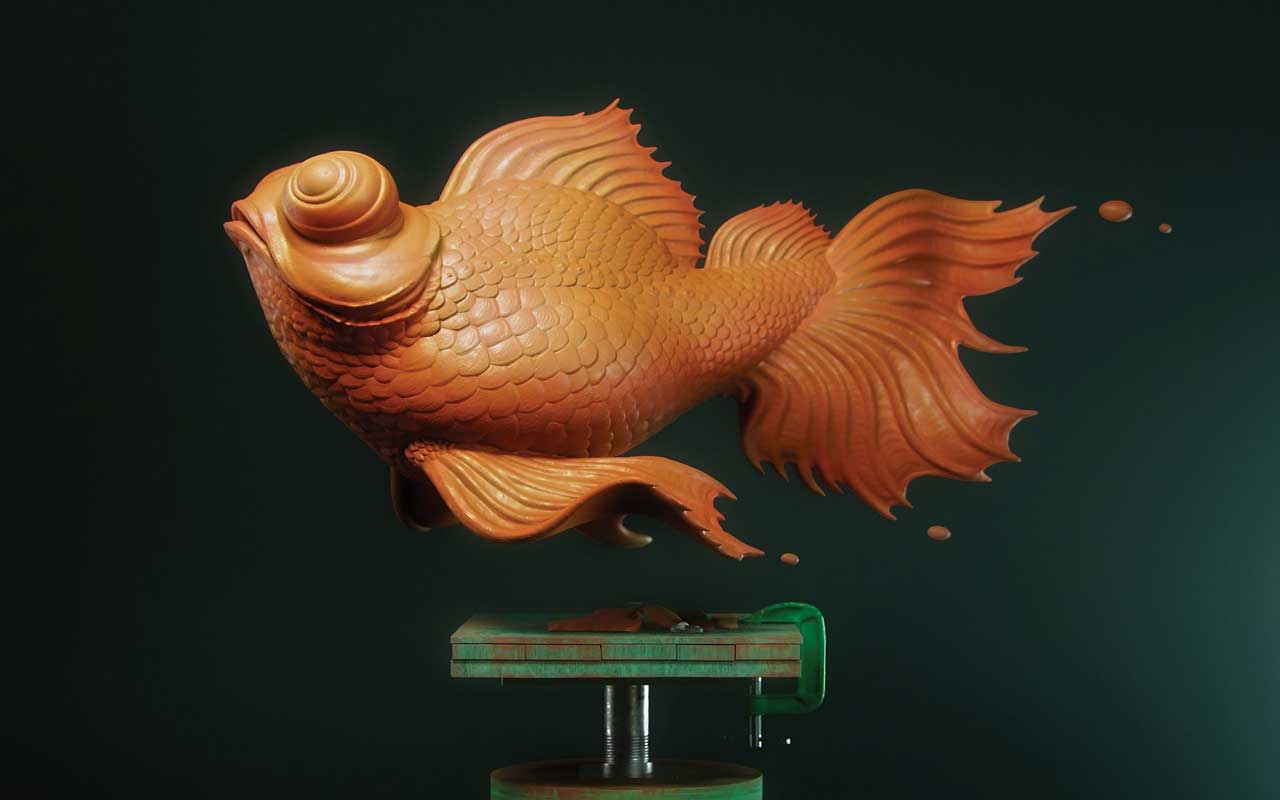
Pixune Creates Sculpting with a Passion for Quality
If you lack the experience, time, or resources to create your own sculpted models, You may rely on our assistance to produce as many models as you require with the level of detail that suits your needs and preferences because our studio offers a wide range of digital sculpting services. Our services include:
1. 3D character sculpting, which is the most popular and in-demand service around today.
2. Hard surface sculpting in order to add great detail and irregular textures/features to the assets.
3. Props, which can be created alongside 3D body sculpting.
4. Creating digital sculpting for your products.
Even if you’re looking for training or high-quality assets, make sure to stop by Pixune Studios! Our experts are more than prepared to fulfill your vision because they have in-depth knowledge of everything that is relevant to 2D/3D art.
Cons of Using Digital Sculpting:
- Unsuitable for even geometry and forms
- Needs a unique set of abilities
- Learning to curve might be challenging.



